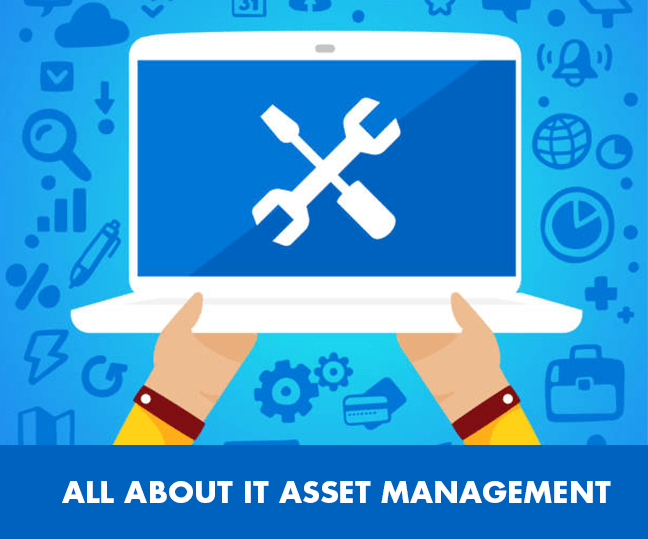As a telecom business operator, you may be under significant pressure to sustain revenue growth and profitability while delivering new digital services. At the same time, maintaining an accurate view of your telecom infrastructure, assets, and equipment in multiple networks and territories also places many telecom operators at a crossroads. This is where telecom asset management software becomes essential, enabling operators to track, manage, and optimize their assets while ensuring seamless service delivery.
According to the Next Move Strategy Consulting survey, the global 5G infrastructure market exceeded 1 million dollars in 2021. By 2030, this market will be valued at 131.4 billion dollars. Hence, it is essential to ensure that all the critical infrastructure within your telecom firm is well-maintained, tested, and kept in reliable working condition at all times.
Related article: Yes, Robotic Process Automation Beneficial to the Telecom
Although you can use spreadsheets to track telecom assets, it doesn’t give companies the assurance of real-time, accurate data or the ability to communicate with other stakeholders. So, how do you manage heavy assets on your books, such as exchanges, ducts, cell towers, copper and fiber networks, data centers, central office switches, and other telecom infrastructure? With telecom asset management software, you can track operational data about tower operations and site assets in real-time, thereby providing greater visibility into asset utilization, asset maintenance, and upkeep costs. Furthermore, with the help of telecom inventory software, you can:
- Quickly determine the exact location of all your telecom assets in the field.
- Effortlessly determine which of your telecom assets will require replacement in the next five to ten years with ease.
- Easily determine which of your telecom assets require inspection and preventative maintenance this year.
- Readily identify which of your assets are impacted by the latest firmware release from a vendor.
Hence, implementing a proper asset management system is the right course of action when you need greater asset visibility into your telecom assets.
Before we delve further, let’s look at key features of asset management.
Key Features of Telecom Asset Management
With growing technological changes, the telecom industry is compelled to make smart Capex investments to stay competitive in today’s market. When you combine the auditory and regulatory requirements with the switch from legacy to next-generation technology, it is critical for telecom operators to understand the rate of change in their network with regard to the following:
- Launching new networks
- Maximizing the return on investments in current assets while providing a smooth transition to newer technologies
- Monetizing and decommissioning end-of-life assets
Of course, the telecom asset manager has a role to play in handling network assets correctly to ensure Capex and Opex are kept in check. At the same time, regulatory and audit compliance is adhered to. However, operators have several asset management solutions to choose from, making it difficult to choose the right solution within the plethora of offerings.
In such a situation, it would be easier for telecom firms to determine the features that are essential to their business operations and use that information as a guide when selecting the best telecom asset management solution. Here is a list of the top 5 features that every telecom company needs in its asset management software:
Centralized Asset View
With the proliferation of new technologies and service offerings, many assets are going to onboard on your telecom network. The network and finance teams require a comprehensive view of the assets, their lifecycles, and cross-functional data.
So, look for a solution that provides you with a 360-degree view of your telecom assets, encompassing asset information across finance, supply chain, network planning, network operations, historical events, contract summary, licenses, and security information. Such a feature also needs to provide cross-functional asset information, which is stitched into a seamless view and made easily accessible through a user-friendly UI. This will provide users the flexibility to access other functional asset data in the same place for a single, federated view of assets.
Asset Lifecycle Management
The primary and most critical asset for telco network operators is the telecom site. Tracking the lifecycle of this revenue-generating asset is an essential element of telecom asset management software systems. You must begin monitoring this asset as soon as you receive the first customer order, continue to monitor it through upgrades, monetize it with more tenants, and finally decommission it. All the while, you must perform operational tasks like preventive maintenance, inspections, and troubleshooting to keep the asset in good condition. Hence, it is essential to look for an asset management solution which offers a suite of services that make it easy for you to manage telecom assets from commission to decommission.
Asset Tracking
Having an efficient and properly functioning asset on hand 24/7 is critical for the telecom industry. With asset tracking in place, you can easily track and locate your telecom assets when they are unavailable and might have gone missing. Asset tracking during site deployments, daily operations, or decommissioning is critical for telecom operations managers. Hence, look for a solution that can easily identify the addition/movements/removals of assets in the enterprise and sends alerts to users if these changes are deviations from the tracked workflows. This information can also be used to suggest process improvements.

Audit Trails
With a right telecom inventory management solution, you must be able to view audit trails that record events in a predefined way, maintaining historical proof of all actions made on assets from installation to removal. Asset audit trails ensure that users are held accountable for their actions and that internal process criteria are being met. Asset transaction information is more accurate, easily available, and usable thanks to audit trails created by automatic electronic records.
Effective License Management
In a telecom setting, managing licenses is a complex job, including a wide range of contract documents to be managed. An extensive contract management system with automation and AI capabilities is becoming more critical for telco teams.
Operators need license management modules to ingest contract information from any data source, including ERP systems, map each contract to applicable network assets, notify specific users or teams on expiry, and cover contract line items. By applying artificial intelligence to the contract ingestion mechanism, heightened efficiencies and accuracy levels can be achieved.
Spare Management
Telecom asset management software with spare management module can track different assets across the network and provide spare asset information, spare levels (min, max), and spare classifications. It can also allow users to initiate workflows to move leftover assets for excess returns, repair, and fault replacement requests. Furthermore, a spare management module can leverage predictive analytics to compute every network site’s exact spare levels based on historical fault data.
How Asset Management Software Can Be Beneficial for Telecom Industry?
A telecom asset management software solution is a holistic system for tracking, monitoring, and maintaining assets. With its many features, managing assets is as easy as pressing a few buttons. Telecom businesses are quickly adopting these cutting-edge technologies that want to increase investment returns while reducing costs. Here’s how:
Quick Overview
Manually keeping track of all the assets in your telecom company might be extremely burdensome. Software solutions for telecom network asset management make it simple by delivering real-time asset updates within a single application window. They display information such as how many assets you have, their total value, their lifespan, and more. This promotes quick and better decision-making.
An Accurate Account of Assets
Telecom equipment may frequently shift locations. Additionally, they lose quality with time. It is crucial to keep track of all these changes to increase asset reliability. With asset tracking software systems, you can easily track the location, compliance, and condition status of each asset across your network. They can integrate with GPS, RFID, barcode scanners, and IoT devices to track assets quickly and precisely.
Maintain Assets
With the help of asset management software, maintaining telecom assets is simple. Users can design unique preventative maintenance schedules using it. Alerts and notifications support them. Users, therefore, receive audible and visual reminders anytime a maintenance task is about to occur or is past due.
Users may receive reminders via emails, SMS, or in-app notifications. Additionally, asset management software records each maintenance task automatically for future reference.
Manage Subscriptions
Asset tracking software for telecom allows telecom organizations to handle subscriptions efficiently. The software displays all the clients and details like connection speed, geographical location, and more. Like maintenance reminders, users get notifications when subscriptions are near expiry or have a pending payment.
Additional Benefits of Telecom Asset Management Software
In addition to the benefits already described, using a robust telecom inventory management software enables you to:
- Maintain an entire “install base” in a single, comprehensive, and consistent data repository.
- Create and manage asset records via a variety of methods, including barcode and RFID.
- Manage and keep track of the telecom widgets that are kept on hand as backups.
- Keep track of telecom assets that are getting ready to be removed, deactivated, or disposed of.
- Maintain a record of all scheduled operations, including planned maintenance and equipment inspections.
- Prevent theft or theft of high-value and vital assets.
- Access a comprehensive range of reporting to satisfy compliance, security, and financial needs.
- Use dependable procedures for disposal, maintenance, and operating chores.
Related article: What are the components of Wi-Fi?
Final Note
The adoption of asset management is clearly gaining traction in the telco industry. Everyone is examining this to determine how to stay competitive. If you hold off, your competitors might overtake you. Just remember – the decision here is not whether to purchase a software package, a drone-capturing platform or an asset management database. The decision is whether you want to work in a different way. And remember, not every asset management solution is created equal. Be sure to do extensive research on potential and dedicated telecom asset management software providers before committing to a platform.

FAQs
What is inventory management in the telecom sector?
The process of keeping track of and organizing physical and intangible assets, including servers, virtual machines, VOIP phones, and software-defined devices, is known as telecom inventory management.
Why it is important to have assets?
Assets are crucial because they can:
- Generate income
- Increase the worth of your company
- Assist in the running of your company
What are the other benefits of telecom asset management?
The benefits of using asset management software in the telecom sector are as follows:
- Complete asset view
- Fixed asset records keeping
- Alerts and notification for maintenance
- Quick and efficient audit
- Spare inventory management



















